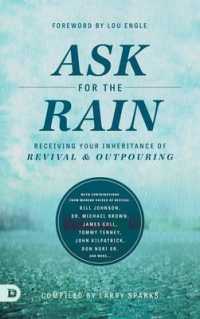- ホーム
- > 洋書
- > 英文書
- > Science / Mathematics
Full Description
In 1954 the decision to locate the country's fast reactor R&D nuclear programme at Dounreay's disused military airfield in Caithness, eight miles west of the town of Thurso, changed the fishing and farming county forever.
Thurso's population trebled in just eight years, with the incomers being labelled the 'Atomics'. The recreational, economic, social and welfare upheaval was immense, but due to good foresight and planning by the UKAEA in conjunction with local councils and officials, social integration was viewed as successful.
Throughout its lifespan Dounreay was mired in controversy and this book doesn't shy away from the bad press, incidents, health scares and court fines that became the backdrop of its existence. Not to mention the continual standoff between the Government and anti-nuclear campaigners over the activities on site.
By the late 80s fast reactor technology was no longer required and the last reactor was shut down in 1994. But that wasn't the end of the story as the challenging work programme of clean-up, decommissioning and demolition will extend to the 2070s. Only then can Caithness and North Sutherland look forward to life after Dounreay.








